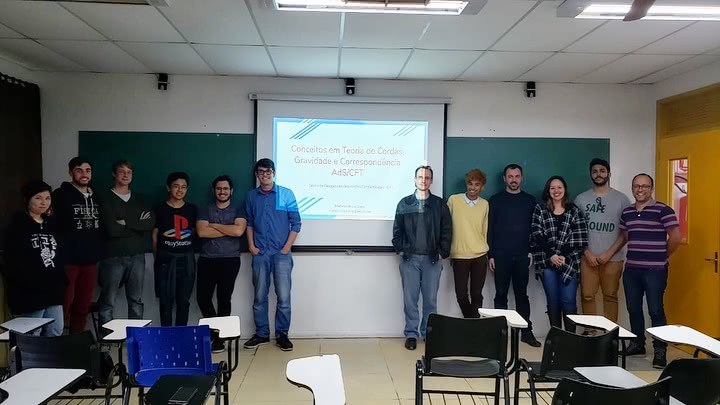Infrastructure
-
Laboratories
Astrophysics Laboratory
Scientific Computing Laboratory
The Tyrell cluster is a Beowulf cluster of the Graduate Program in Physics. It has 11 nodes:
4 Intel i7-3930K CPU @ 12x3. 20GHZ, 16GB RAM, 320GB
5 Intel i3-2120 CPU @ 4x3. 30 GHz, 4GB RAM, 320GB
1 Intel Q8400 CPU @ 2x2. 66 GHz, 2GB RAM, 280 HD
A total of 82 cores, 102GB RAM and ~3.4 TB of storage. It's prepared to execute parallel and distributed tasks, using GNU Parallel and MPI, respectively. It's recommended that only optimized tasks be executed in the cluster. It's physically allocated in Building 2, in the annex of Computer Lab 2206. Remote access is available.
Additional Material: Click here
The Medical Physics Laboratory of FURG's Institute of Mathematics, Statistics and Physics ("IMEF") was created with the objective of promoting teaching, research and extension with students of the Bachelor's Degree in Physics with emphasis on IMEF's Medical Physics. The laboratory has X-ray generators, detectors, gamma-ray sources, and other equipments for development of teaching and research, including simulation objects and systems for characterization of X-ray beams. It's also equipped with a proper radiation room, and provides all personal protective equipment to users, including individual dose monitors. The scientific works that has been developed in the laboratory related to physics applied to medicine and biology have the participation of researchers from the Physics Department and the Medical School of Ribeirão Preto from the University of São Paulo.
Location: N
Capacity: 20 students
Physical area available: 60 m2We have two laboratory spaces, one with 60 m² and the other one with around 20 m².
The laboratory aims to work in the area of plasma technology as well as the studies related to controlled thermonuclear fusion, both experimental and theoretical aspect regarding physics and plasma technology, now that we have the TOKAMAK NOVA.Today, we have four experimental assemblies:
Dielectric-barrier discharge system (DBD) - donated by Prof. Machida - (We have interactions with: Medical Physics, Chemistry and Biology)
Gliding arc discharge (GAD) (Possible interactions: Physics and Chemistry)
Plasma spraying system - Thermal Plasma (We have interactions with: Physics, Mechanical Engineering - Materials Engineering and a company)
Glow discharge system for studies on surface modification and possible studies of thin film deposition in cathodic cages. (Possible interactions: Physics, Mechanical Engineering, Materials Engineering and Food Engineering).
With the arrival of UNICAMP'S TOKAMAK NOVA, we'll begin a new area in our laboratory: controlled thermonuclear fusion.
We want this laboratory to be multi-user, with the participation of other higher education institutions in addition to other areas (Biology, Chemistry and Engineering).
Coordinator: Prof. Magno Pinto Collares, PhD.
Additional Material: Click here.
Laboratory of Superconductivity, Magnetism, and Advanced Materials
This research laboratory aims the experimental study in the field of Condensed Matter Physics. We’re in process of nucleation and implementation of this research area at the Federal University of Rio Grande - FURG. Our objective is to prepare superconducting systems, magnetics and other materials samples with scientific and technological interest to study their physical properties.
The Laboratory of Superconductivity, Magnetism, and Advanced Materials is located in the P16 room of the Institute of Mathematics, Statistics and Physics ("IMEF"), where it's allocated cryostats that allow the study of magneto-transport properties at low temperatures of solid samples. In addition, we have the Laboratory of Sample Preparation in the P13 room, where there are ovens, press, and all the necessary instrumentation for sample preparation.
We also have equipment for structural characterization of samples: X-ray Diffractometer with accessory for temperature measurements and microstructural characterization: Transmission Electron Microscopy (TEM) and Scanning Electron Microscopy (SEM), available at the Electron Microscopy South Center ("CEME-SUL").
Coordinators:
Prof. Jorge Luiz Pimentel Junior, PhD.
Prof. Agueda Maria Turatti, PhD.







